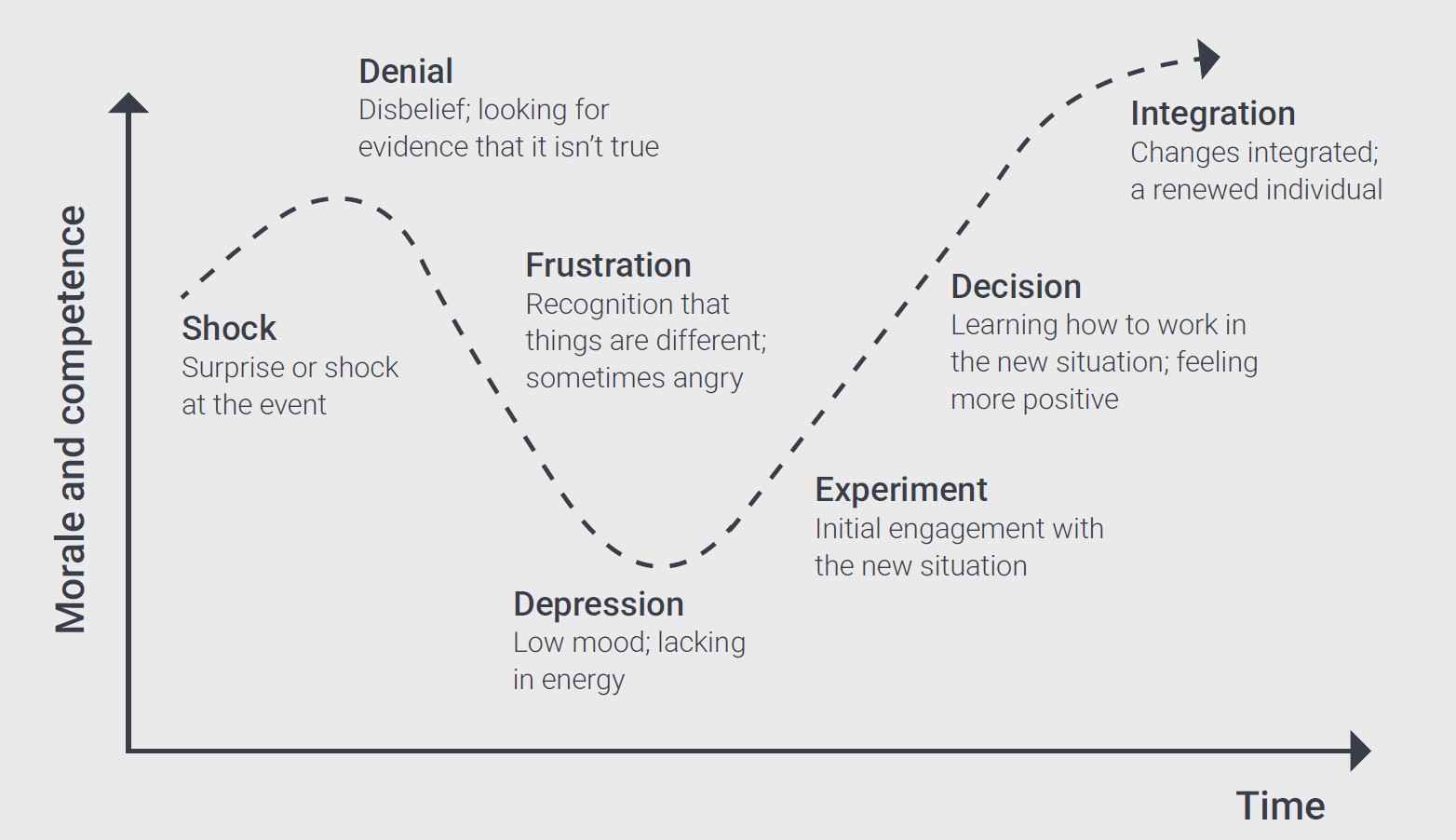Advisor teams: Three steps to managing change and co-creating a path forward
Bryan Powell, Executive Director, Practice Management, discusses how advisory teams can better manage transitions – whether big or small – by understanding each member’s relationship to change.

5 minute read
Key takeaways:
- Most teams move forward with changes – from implementing a new process to acquiring a practice – without taking the time to consider how different team members relate to change.
- This is a mistake, as understanding these different perspectives is critical to ensuring alignment and commitment.
- Three key steps can keep teams aligned through change: Acknowledging individuals’ relationship to change, facilitating open conversations where everyone can share their perspective, and working as a team to co-create a path forward.
When it comes to change, everyone has a different perspective and experience. Some team members actively seek out and thrive on change. Others need time to learn, adapt, and understand the “why” before jumping on board with the new direction. Still others may find change disorienting or threatening and actively resist it.
While most teams are aware of these differences, they often skip the step of exploring each other’s relationship to change. This is a mistake: Going through an exploration prior to the implementation phase allows team members to share and react to different approaches to change, which can help ensure alignment and commitment.
Whether your team is implementing a new process or procedure or going through a bigger change like acquiring or selling a practice, it’s important to focus on three steps:
1. Acknowledge individuals’ relationship to change.
2. Facilitate team conversations where everyone can share their perspective.
3. Work as a team to co-create the path forward.
Following these steps will give team members the opportunity to have their voice heard on how they feel about the change. This type of open forum will allow the team to devise next steps everyone can commit to, so they can support each other not only through the transactional aspects of change, but also the emotional aspects.
The Kübler-Ross Change Curve®
Before we get into the three steps, I’d like to introduce a valuable tool that can help team members navigate the differences in their relationship to change. The Kübler-Ross Change Curve provides a framework for understanding the emotional progression through change and has been widely used in change management since the 1980s.1

Source: Elisabeth Kübler-Ross Foundation.
This tool can support objective discussions on where each team member is in the different stages of change as well as their emotional response to the change. It can also provide a platform for teams to collaborate on action steps that allow them to move through the different stages of change.
Step 1: Acknowledge individuals’ relationship to change
First, consider sharing the Kubler-Ross Curve with the members of the team. Create a safe space so team members can openly express where they are on the curve. Are they in the denial stage, possibly experiencing anger with the oncoming change, or are they already in the acceptance phase?
Once you’ve introduced the curve and explained the different stages of emotional responses to change, consider the following next steps:
- Encourage team members to reflect on and share their current feelings or challenges regarding the change. What have been their previous experiences with change? What would they need to feel comfortable with the change? How can team members support each other?
- Be sure to normalize the different perspectives voiced by team members and acknowledge that everyone has had unique experiences with change, which means they may process change differently than others.
This step is crucial for building empathy and trust among team members by validating their individual relationships with change.
Step 2: Facilitate team conversations on perspective-sharing
Now that it is out in the open in terms of team members relationship to change, do not shy away from the conversation. Instead help team members to understand each other’s relationship to the change and how it impacts the team including ways the team can collaborate through the transformation.
- Conduct a guided discussion where team members can share how their current stage on the Kubler-Ross Curve might influence their perspective and actions.
- As part of the conversation, make sure to highlight how team members at different stages on the curve can complement and support each other as the change is implemented.
- Consider mapping out where everyone is on the curve to visually represent where you stand as a team. Review together consistently as you navigate the change to see if the team has shifted and determine what other areas require time and attention.
It’s important to note that this should not be a “one-and-done” conversation. Change is constant. As the team continues to experience change, holding these discussions regularly will enhance everyone’s appreciation of the group’s diverse viewpoints and help create a shared sense of purpose.
Step 3: Co-create the path forward
In this last step, take the time to align the team on actionable steps to move toward acceptance of and commitment to the change. This step is crucial to building a sense of ownership, accountability, and momentum to help ensure the implementation stage is successful and that everyone is fully committed.
- Ask the team to communicate what they need to feel more confident about the change. This can include additional resources, communication, or understanding of the why behind the change. Remember, everyone has a different relationship to change, so support will need to be customized accordingly.
- Create a shared action plan with clear roles and next steps, ensuring that it aligns with the Key Performance Indicators the team needs to execute on.
- Encourage a forward-looking mindset by devoting time in team meetings (or one-off situations when appropriate) to celebrate small wins as the team progresses through the change curve.
These types of discussions can enhance critical competencies such as ownership and accountability and help team members feel more empowered.
Bringing it all together
Acknowledging the different relationships team members have with change can help enhance the culture you’re creating within your organization. By facilitating conversations that encourage team members to share their different perspectives, you can bring unique thoughts and ideas to the forefront and reap benefits from the team’s diversity of experience.
Lastly, when you co-create the path forward together – rather than dictate what it should look like based on one point of view – you can help ensure all team members remain involved and engaged through any changes the team might face.


